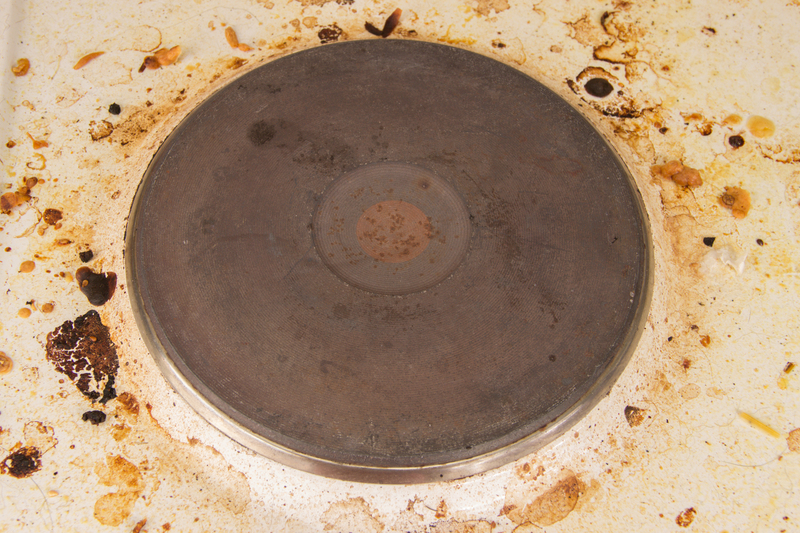Crucial Air Quality: Its Impact on Health in Business and Home Settings
Posted on 28/08/2025
Crucial Air Quality: Its Impact on Health in Business and Home Settings
The importance of clean air in our daily environment cannot be overstated. From bustling corporate offices to cozy living rooms, the quality of the air we breathe has direct and often profound impacts on our physical and mental health. Understanding these impacts, assessing your current situation, and taking steps to improve air cleanliness can make a significant difference in your wellbeing, productivity, and overall comfort.

Understanding Air Quality: Why It Matters Everywhere
Air quality refers to the cleanliness of the air in a given environment, measured by the presence of pollutants such as dust, chemicals, volatile organic compounds (VOCs), biological particles, and more. Both indoor and outdoor environments are susceptible to contamination, although indoor air quality (IAQ) is often overlooked despite the fact that most people spend over 90% of their time indoors.
Key Factors Influencing Crucial Indoor Air Quality
- Ventilation: Inadequate air flow traps pollutants indoors.
- Building materials: Certain paints, furniture, and carpets emit VOCs.
- Activities: Cooking, cleaning, and hobbies can contribute to poor air.
- Biological sources: Mold, dust mites, pet dander, and pollen are common allergens.
- External pollutants: Outdoor pollution can enter through open windows or doors.
High-quality air is not only vital for basic respiration but also plays a crucial role in preventing illnesses, enhancing focus, and ensuring optimal functioning of workplaces and homes. In essence, air quality is an invisible but essential determinant of our overall quality of life.
The Impact of Air Quality on Health in Homes and Businesses
Immediate Health Effects
- Irritation: Poor air can cause irritation of the eyes, nose, and throat.
- Respiratory Issues: Asthma, coughing, and shortness of breath may be triggered or worsened.
- Headaches and Fatigue: Exposure to contaminants can lead to headaches, dizziness, and chronic tiredness.
These symptoms are often nonspecific and can easily be mistaken for the effects of other health issues. However, prolonged exposure to compromised air quality--especially in tightly sealed, energy-efficient buildings with poor ventilation--can lead to more serious chronic health problems.
Long-Term Health Consequences
- Chronic Respiratory Diseases: Persistent exposure to pollutants increases the risk of asthma, bronchitis, and other respiratory problems.
- Cardiovascular Diseases: Fine particulate matter and chemical fumes have been linked to hypertension and heart disease.
- Neurological Issues: VOCs and other chemicals are increasingly being implicated in cognitive dysfunction and neurodevelopmental disorders.
- Cancer: Exposure to certain substances, such as radon or asbestos, can significantly elevate the risk of cancer.
The World Health Organization attributes millions of premature deaths annually to poor air quality, highlighting its critical role in global health.
Business Settings: The Silent Productivity Killer
How Office Air Quality Impacts Employee Health and Performance
In the context of business, air quality in the workplace is often the determining factor between a thriving, energetic workforce and a group suffering from repeated sick days, low morale, and reduced efficiency. Several studies have shown that improving IAQ in office environments leads to:
- Increased Productivity: Studies indicate an improvement in performance by up to 10% with better indoor air.
- Reduced Absenteeism: Employees exposed to clean air take fewer sick days and experience less presenteeism (working while ill).
- Higher Retention Rates: Healthy workplaces boost employee satisfaction and retention.
Sources of Indoor Air Pollution in Offices
- HVAC Systems: Poorly maintained systems can harbor mold and bacteria.
- Office Equipment: Printers and copiers emit ozone and VOCs.
- Cleaning Agents: Chemical cleaners and disinfectants may release harmful fumes.
- Construction Materials: Formaldehyde in pressed-wood products can off-gas for years.
A proactive approach, such as regularly servicing HVAC units and choosing low-emission products, can create a substantial positive difference in workplace air quality and, by extension, in business outcomes.
Home Settings: Ensuring Safe and Comfortable Living Spaces
Common Residential Air Pollutants
- Secondhand Smoke: A major source of indoor air contamination, especially dangerous for children and the elderly.
- Mold and Mildew: Thrive in damp environments and can trigger allergies and asthma.
- Pets: Dander and hair contribute to poorer air.
- Household Products: Aerosol sprays, paints, and air fresheners release VOCs.
- Gas Appliances: Stoves and heaters can leak carbon monoxide and nitrogen dioxide.
In homes, these contaminants accumulate quickly, particularly in spaces with limited ventilation. Children, elderly people, and those with pre-existing conditions are especially sensitive to these pollutants, making excellent indoor air quality a critical factor for health at home.
The Health Impact on Vulnerable Groups
- Children: Developing lungs are more susceptible to pollutants, increasing the risk of asthma and allergies.
- Elderly: Reduced immune function and existing health issues heighten sensitivity.
- Immunocompromised: People with weakened immune systems face higher risk of infections and illness.
Measuring and Monitoring Air Quality in Homes and Businesses
What Are the Key Indicators of Air Quality?
- PM2.5 and PM10: Fine particulate matter that penetrates deep into lungs and bloodstream.
- CO2 Levels: High concentrations indicate poor ventilation and can cause headaches and fatigue.
- VOC Concentrations: Volatile organic compounds, linked with a range of health issues.
- Humidity: Excessive moisture encourages mold; too little can dry out mucous membranes.
- Temperature: Extremely high or low temperatures can worsen pollutant effects.
Regular monitoring with digital air quality detectors helps both homeowners and business managers to identify issues and implement timely solutions. Many modern air quality monitors can detect a combination of PM2.5, VOCs, CO2, and humidity levels in real-time, offering actionable data.
Strategies for Improving Air Quality Indoors
Effective Steps for Business Settings
- Regular Maintenance: Professionally clean air ducts and HVAC filters regularly.
- Upgrade to HEPA Filters: These capture up to 99.97% of airborne particles.
- Use Low-Emission Materials: Select furniture and building materials with minimal VOC emissions.
- Promote Plant Life: Certain indoor plants help remove toxins and improve air freshness.
- Control Humidity: Use dehumidifiers to prevent mold growth.
- Develop Policies: Implement rules to limit the use of air-polluting products and ensure prompt response to water damage or leaks.
Practical Solutions for Healthier Home Air
- Enhance Ventilation: Open windows daily, use exhaust fans in kitchens and bathrooms.
- Invest in Air Purifiers: Devices equipped with HEPA and activated carbon filters can significantly reduce pollutants.
- Control Allergens: Wash bedding frequently, groom pets, and vacuum with HEPA-enabled cleaners.
- Ban Smoking Indoors: Keep smoke-free policies in all indoor spaces.
- Avoid Synthetic Fragrances: Opt for natural alternatives and minimize the use of scented cleaning products.
- Check and Maintain Appliances: Inspect gas stoves, heaters, and fireplaces for leaks or malfunction.
Implementing these strategies not only leads to immediate improvements in air freshness and comfort, but also translates into substantial long-term health benefits and potential cost savings in the form of reduced healthcare bills and higher productivity.

The Link Between Air Quality and Mental Well-being
Beyond physical health, crucial air quality is intimately connected to mental health and cognitive performance:
- Concentration and Alertness: Elevated CO2 and VOCs have been shown to impair decision-making and attention span.
- Mood Disorders: Chronic exposure to poor air can elevate stress levels and contribute to anxiety or depression.
- Sleep Quality: Polluted air affects sleep cycles, leading to fatigue and poor daytime function.
Maintaining optimal air cleanliness, therefore, is a comprehensive investment into your workplace or home's overall quality of life.
Conclusion: Making Air Quality a Top Priority in Your Life
Whether in your business premises or within the comfort of your own home, crucial air quality should be a top priority. The evidence is clear that investing in better ventilation, regular maintenance, air monitoring, and the reduction of pollutants can yield immense returns in terms of health, productivity, and well-being. With growing attention on sustainability and public health, cultivating excellent air quality is not just a personal concern--it is a community responsibility and a forward-thinking business strategy.
Take proactive steps today:
- Assess your current air quality using reliable monitors.
- Identify sources of pollution and eliminate or minimize them.
- Upgrade systems and routines to promote clean, fresh air every day.
Your lungs--and those of your colleagues, employees, and loved ones--will thank you for making air quality a foundation for a healthier, more vibrant life.




